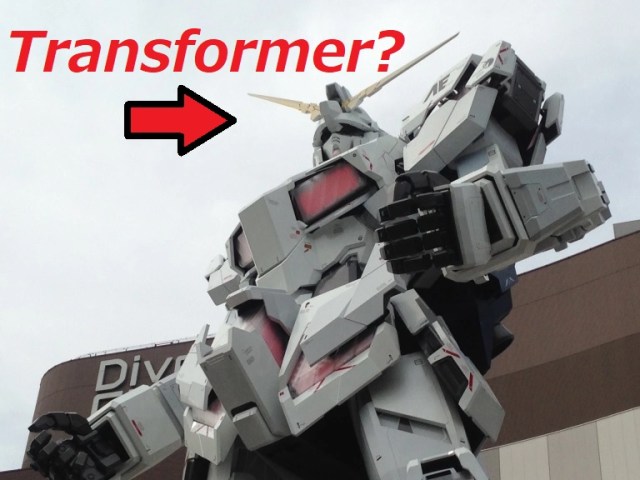
Not all transforming robots are Transformers, anime fans are quick to explain.
Pandemic protocols mean the Tokyo Olympics are taking place without spectators, so there’s far less star power in the stands than you’d ordinarily find at the world’s premiere sporting event. But there’s one famous figure who can’t be barred from watching some of the events, and that’s giant anime robot Gundam.
Tokyo’s Odaiba district is serving as the venue for a number of competitions, but even before the Olympics rolled into town it was already the home of a full-scale 19.7-meter (64.6-foot) tall RX-0 Unicorn Gundam statue that stands outside the entrance to the Diver City entertainment complex. That gave the mecha a great view of the triathlon last week, and this week the RX-0 is taking in the Olympic debut of sport climbing.
▼ The sport climbing walls, with “2020” written on them, are right across the street from Gundam.
With an abundance of open space surrounding the competition area, Gundam can be seen in the background as athletes make their ascents, providing a unique sense of scale and also prompting a tongue-in-cheek tweet from the BBC. But while the U.K. public broadcaster is one of the world’s most respected news agencies, even they’re not immune from inaccuracies.
“Just when you thought speed climbing was frightening enough, you now need to impress a Transformer too,” says the message, but as cultured anime fans pointed out with lightning speed and in massive numbers, Gundams are not Transformers. Gundam and Transformers are two completely different franchises, and Gundam can’t even be called a Transformers imitator. The original Mobile Suit Gundam premiered in 1979, five years before the Transformers made their debut.
Several helpful commenters also pointed out that while the Transformers are sentient machines with individual personalities, the whole point of the Gundam series, which established the “real robot” anime sub-genre, is that its mecha are purely pieces of military hardware, without any implied soul or psyche, serving as literal and figurative vehicles to tell a story about human conflicts.
Several less helpful, but more entertaining, commenters replied to the BBC’s tweet with a long list of other animated robots that the statue seen at the Olympics is, in fact, not:
“That’s very clearly Mazinger Z.”
“Guys you’re all wrong, that’s clearly a Go Bot from the hit super hero robot series, Macross.”
“Isn’t that Patlabor?”
“Come on, that’s clearly an Eva unit.”
“No you buffoon, that’s Dancouga.”
“Kinda looks like L-Gaim.”
“I dunno, seems like a Shinkalion to me.”
This was also the perfect time to share one of English-dubbed anime’s most iconic dialogue lines for the purpose of educating the BBC:
Those with a thorough understanding of Gundam engineering might point out that the RX-0 does partially transform. Its head and face change dramatically as it switches between Destroy and Unicorn Modes, and this feature is present in the real-world Tokyo statue as well.
However, the ability to reconfigure only makes the RX-0 Gundam a “transformer,” not a capital-T “Transformer.”
The BBC, showing a willingness to learn from its mistakes, admitted the error, while also furthering the discussion of robots in sport in a follow-up tweet.
All joking aside, it’s pretty impressive to see Gundam noticed and acknowledged (even if initially by the wrong name) by the BBC, and another example of how hosting the Olympics has been an opportunity for people around the world to get a taste of Japanese culture, including its modern anime and video game art.
Source: Twitter/@BBCSport via Hachima Kiko
Images ©SoraNews24
● Want to hear about SoraNews24’s latest articles as soon as they’re published? Follow us on Facebook and Twitter!
Follow Casey on Twitter where he wants to see Escaflowne Guymelef fencing debut at the 2028 Los Angeles Olympics.